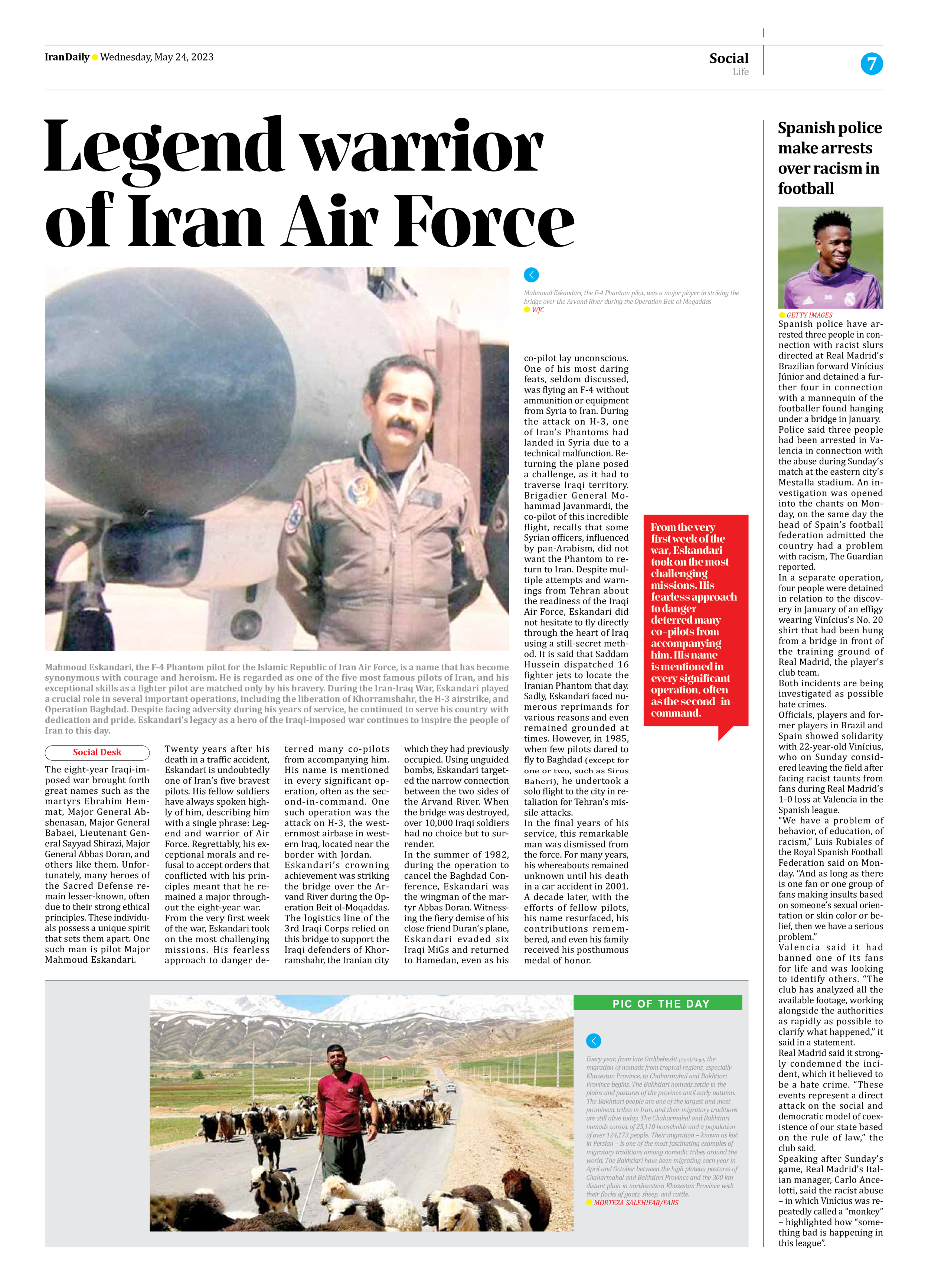
Legend warrior of Iran Air Force
The eight-year Iraqi-imposed war brought forth great names such as the martyrs Ebrahim Hemmat, Major General Abshenasan, Major General Babaei, Lieutenant General Sayyad Shirazi, Major General Abbas Doran, and others like them. Unfortunately, many heroes of the Sacred Defense remain lesser-known, often due to their strong ethical principles. These individuals possess a unique spirit that sets them apart. One such man is pilot Major Mahmoud Eskandari.
Twenty years after his death in a traffic accident, Eskandari is undoubtedly one of Iran’s five bravest pilots. His fellow soldiers have always spoken highly of him, describing him with a single phrase: Legend and warrior of Air Force. Regrettably, his exceptional morals and refusal to accept orders that conflicted with his principles meant that he remained a major throughout the eight-year war.
From the very first week of the war, Eskandari took on the most challenging missions. His fearless approach to danger deterred many co-pilots from accompanying him. His name is mentioned in every significant operation, often as the second-in-command. One such operation was the attack on H-3, the westernmost airbase in western Iraq, located near the border with Jordan.
Eskandari’s crowning achievement was striking the bridge over the Arvand River during the Operation Beit ol-Moqaddas. The logistics line of the 3rd Iraqi Corps relied on this bridge to support the Iraqi defenders of Khorramshahr, the Iranian city which they had previously occupied. Using unguided bombs, Eskandari targeted the narrow connection between the two sides of the Arvand River. When the bridge was destroyed, over 10,000 Iraqi soldiers had no choice but to surrender.
In the summer of 1982, during the operation to cancel the Baghdad Conference, Eskandari was the wingman of the martyr Abbas Doran. Witnessing the fiery demise of his close friend Duran’s plane, Eskandari evaded six Iraqi MiGs and returned to Hamedan, even as his co-pilot lay unconscious.
One of his most daring feats, seldom discussed, was flying an F-4 without ammunition or equipment from Syria to Iran. During the attack on H-3, one of Iran’s Phantoms had landed in Syria due to a technical malfunction. Returning the plane posed a challenge, as it had to traverse Iraqi territory. Brigadier General Mohammad Javanmardi, the co-pilot of this incredible flight, recalls that some Syrian officers, influenced by pan-Arabism, did not want the Phantom to return to Iran. Despite multiple attempts and warnings from Tehran about the readiness of the Iraqi Air Force, Eskandari did not hesitate to fly directly through the heart of Iraq using a still-secret method. It is said that Saddam Hussein dispatched 16 fighter jets to locate the Iranian Phantom that day.
Sadly, Eskandari faced numerous reprimands for various reasons and even remained grounded at times. However, in 1985, when few pilots dared to fly to Baghdad (except for one or two, such as Sirus Baheri), he undertook a solo flight to the city in retaliation for Tehran’s missile attacks.
In the final years of his service, this remarkable man was dismissed from the force. For many years, his whereabouts remained unknown until his death in a car accident in 2001. A decade later, with the efforts of fellow pilots, his name resurfaced, his contributions remembered, and even his family received his posthumous medal of honor.







